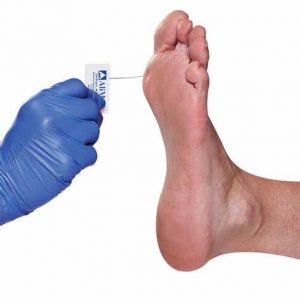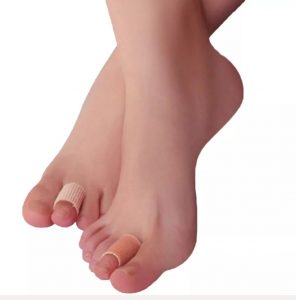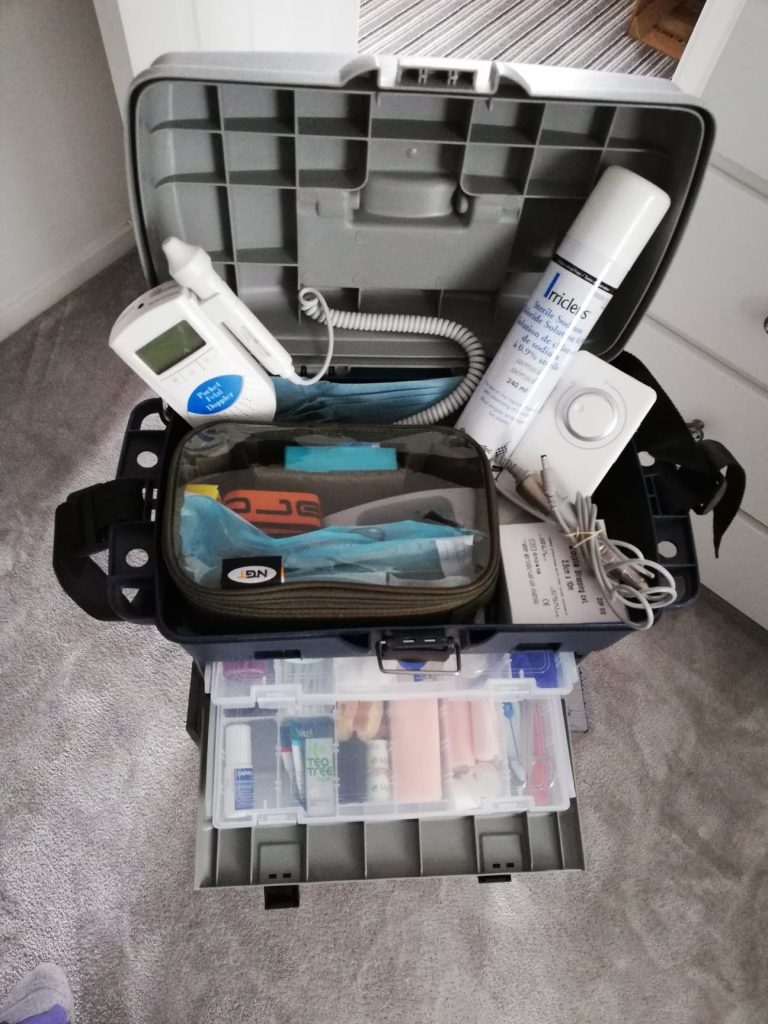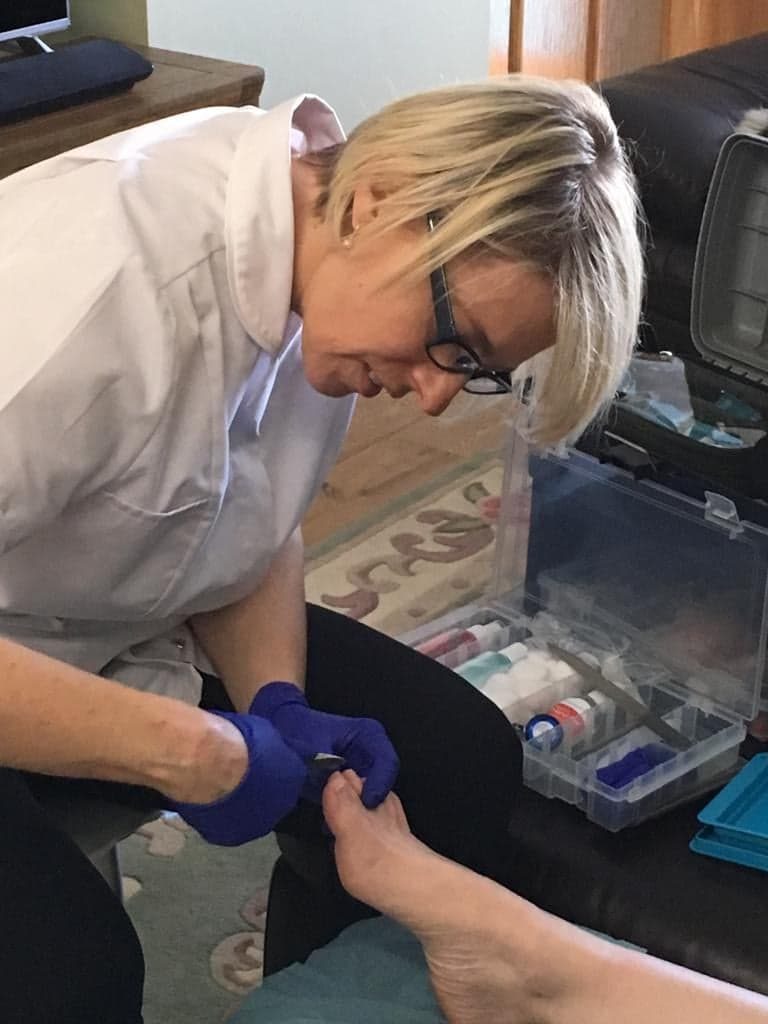The Diabetic’s Do’s and Don’ts

Diabetics are often more susceptible to infections that don’t heal, poor circulation, known as peripheral vascular disease and numbness in the feet, known as peripheral neuropathy. High blood sugar makes the skin a perfect breeding ground for bacteria, a dangerous situation if you can’t feel
injuries to your feet. Because an infection that doesn’t heal can lead to serious complications it is essential that the diabetic patient prevents infections with careful foot care.
Diabetic feet require special care and attention. The following recommendations are all important and necessary. They have been designed to help you establish a daily routine to care for your feet and to avoid, rather than invite trouble that can lead to more serious problems including ulcers,
infections, gangrene, loss of toe or toes, and in some cases, loss of life.
The ‘Do’ List
DO wash your feet daily in warm, but not hot water. Test the temperature of the water with the elbow or a thermometer – not the hand, which may also be affected. Use soap, not detergent or an emulsion prescribed by your GP if the skin is excessively dry. Dry the feet thoroughly with a soft towel, patting rather than rubbing the skin. Ensure that you have dried thoroughly between your
toes.
DO use an emollient based foot cream to massage your feet morning and night to keep the skin soft and smooth.
Examine your feet thoroughly on a daily basis. Inspect all surfaces of the foot, check between the toes for cracks, corns, blisters etc. Use a mirror on the floor to see underneath the foot if this
helps. If you cannot see well enough to do this for yourself, ask the assistance of someone who can.
ALWAYS have your Foot Health Practitioner or Podiatrist/Chiropodist trim your nails because an ingrown nail or even the slightest nick in the skin from nail scissors or an abrasion to the skin can lead to a serious infection.
DO see your Foot Health Practitioner or Podiatrist/Chiropodist at least once a month to two months at the very most. These visits depend on you and the severity of your diabetes.
DO seek the help of your GP, Foot Health Practitioner or Podiatrist/Chiropodist if you discover a
problem. Apply a mild antiseptic and a clean bandage as necessary.
DO ask your GP to prescribe a safe foot powder or soak if your feet perspire excessively. Alternatively speak to your local pharmacist, they are just as good as you family doctor.
DO change your socks or hosiery daily for fresh, clean items, which should be free of darns, holes or prominent seams. Be sure your socks fit properly and comfortably and do not cramp the toes. The best socks to wear are wool, cotton or nylon-blend.
DO wear soft leather shoes that have sufficient room within and beware of discontinuities such as stitching and decorative features that might cause rubbing of the foot. Before putting your shoes on, check them inside to ensure they are free from stones or sharp edges that may cause injury.
Your shoes should fit properly and comfortably with no points of irritation. It is also best to avoid high boots as these are likely to constrict the lower leg circulation.
DO rotate the shoes you wear to allow them to dry out after you have worn them. It can take 24 hours for your shoe to completely dry out from either perspiration or wet weather so do not wear the same pair every day. Fungus can thrive in the damp, dark and warm crevices inside the shoe.
DO protect your legs and feet from the sun to avoid burning, and protect them against the cold and chilblains.
Get plenty of exercise to stimulate circulation, control your diet and take your medication as prescribed. Avoid tobacco and caffeine as these impair circulation.
The ‘Don’t’ List
DO NOT sit on a problem, but instead seek the help of your GP, Foot Health Practitioner or Podiatrist/Chiropodist. Read this carefully and share with your friends and close ones.
DO NOT trim your own nails and NEVER try to treat the simplest foot problem on your own, even a corn or callus, as this could lead to an infection.
DO NOT cut down the sides of the nail or poke anything under or down the sides of the nail. If you have difficulty in cutting your nails you should seek the help of a Foot Health Practitioner or Podiatrist/Chiropodist. It is not advisable to let a helpful neighbour or friend to do this for you. The risk is too great to trust any but a properly trained person to assist you in this matter.
DO NOT use chemicals or lotions or creams that have a drying effect on the skin.
Never use creams between the toes as this can make the area moist which can then lead to fungal infections or corns.
DO NOT use any over the counter medications on your feet, for example, corn or callus medications or antiseptics, unless they are prescribed for you. Some corn and callus remedies contain salicylic acid which can burn the skin and this can lead to serious complications such as ulceration.
DO NOT walk barefoot, because it is easy to stub a toe or step on splinters or other objects and if you have loss of sensation in your feet you will not feel them or any injuries you may incur. Wear slippers and shoes and in public swimming baths always wear flip flops.
DO NOT wear shoes that are too tight and avoid those made of plastic, patent leather, or other synthetic materials as they are not porous or flexible enough. This could lead to irritation and or circulatory problems.
DO NOT wear second hand shoes as fungal infections can be transmitted from other people’s footwear. You can buy new shoes these days at a fraction of the price.
DO NOT wear circular garters or socks with a tight top band. Consequently don’t wear support hosiery unless prescribed. These items will constrict your feet and inhibit circulation.
DO NOT warm your feet in front of a fire and do not use hot water bottles, electric blankets or foot spas. You might not feel the heat and burn.
DO NOT use fish spas/pedicures as there is a high risk of cross infection from the fish tank water for the diabetic patient.
ACT IMMEDIATELY if you spot the following danger signs and seek immediate medical advice from your GP, Diabetes Nurse or Podiatrist/Chiropodist.
Swelling
Changes in the colour of the skin (in white skin – pink or redness, brown or black skin may become darker)
Sores or cuts that do not heal
Fissures that exude pus
Skin that feels hot to touch
Pain in the foot
Difficulty in moving the foot
These signs could indicate poor circulation, an infection, or the early stages of an ulcer or gangrene.
MEDICAL DISCLAIMER:-
This document is provided for information only. The information is NOT a substitute for professional medical care by a qualified doctor or other health care professional. ALWAYS check with your doctor if you have any concerns about your condition or treatment. “Simply Foot Health” is not responsible or liable, directly or indirectly, for ANY form of damages whatsoever resulting from the use (or misuse) of information contained in or implied by the
information in this document.





